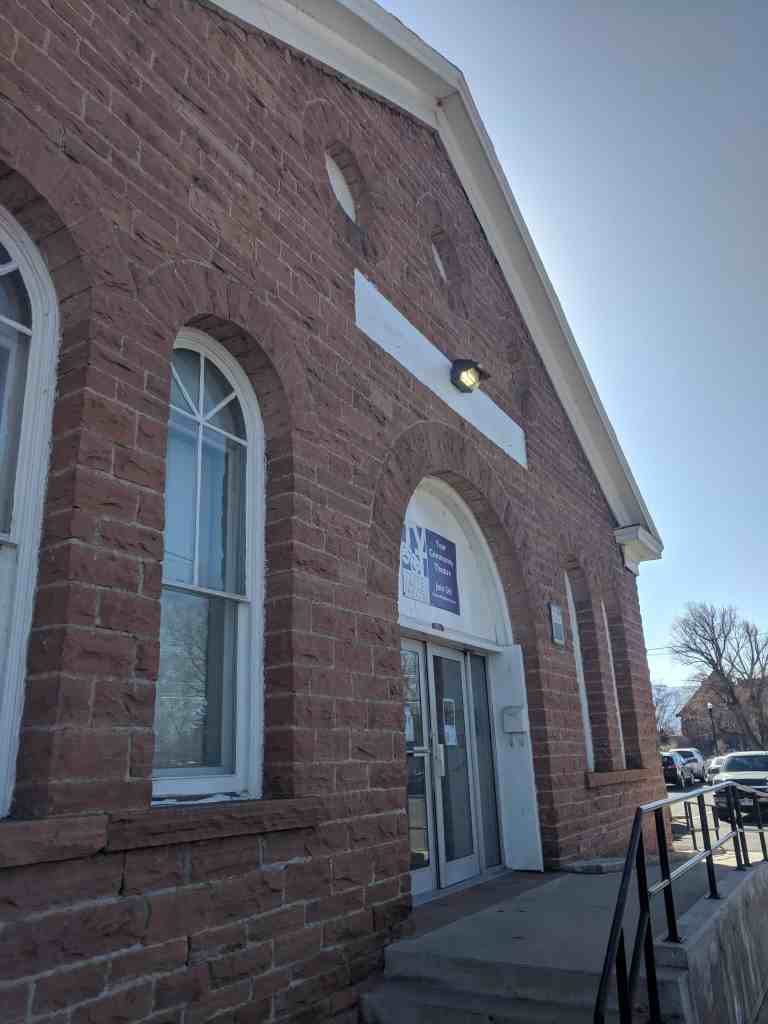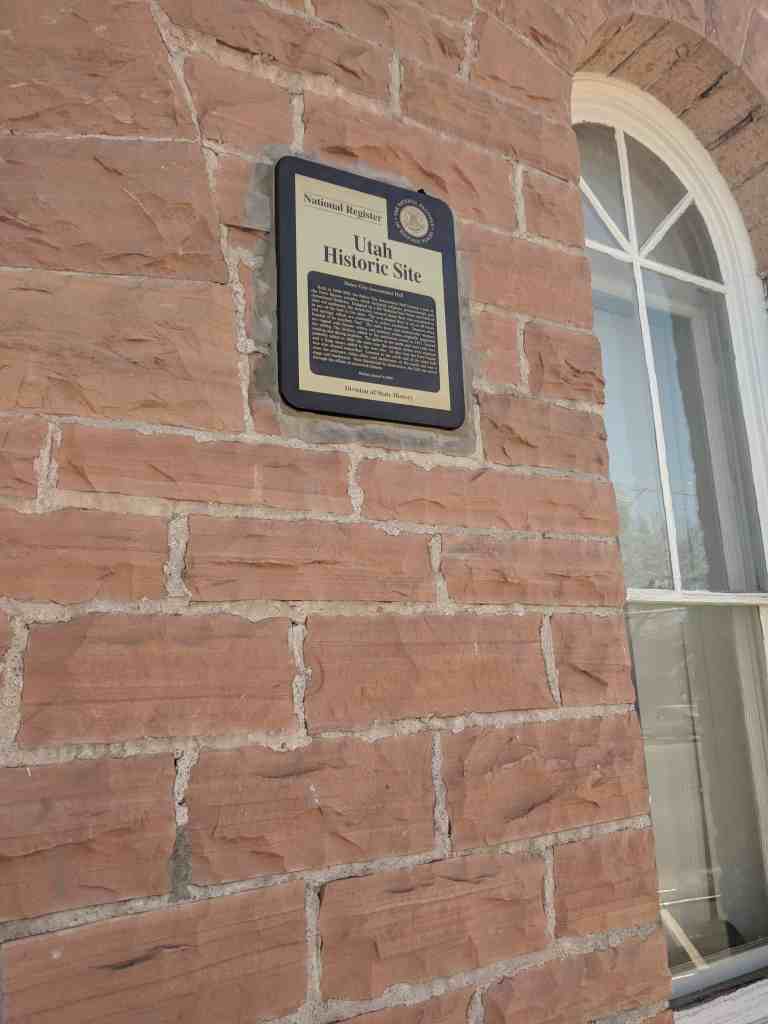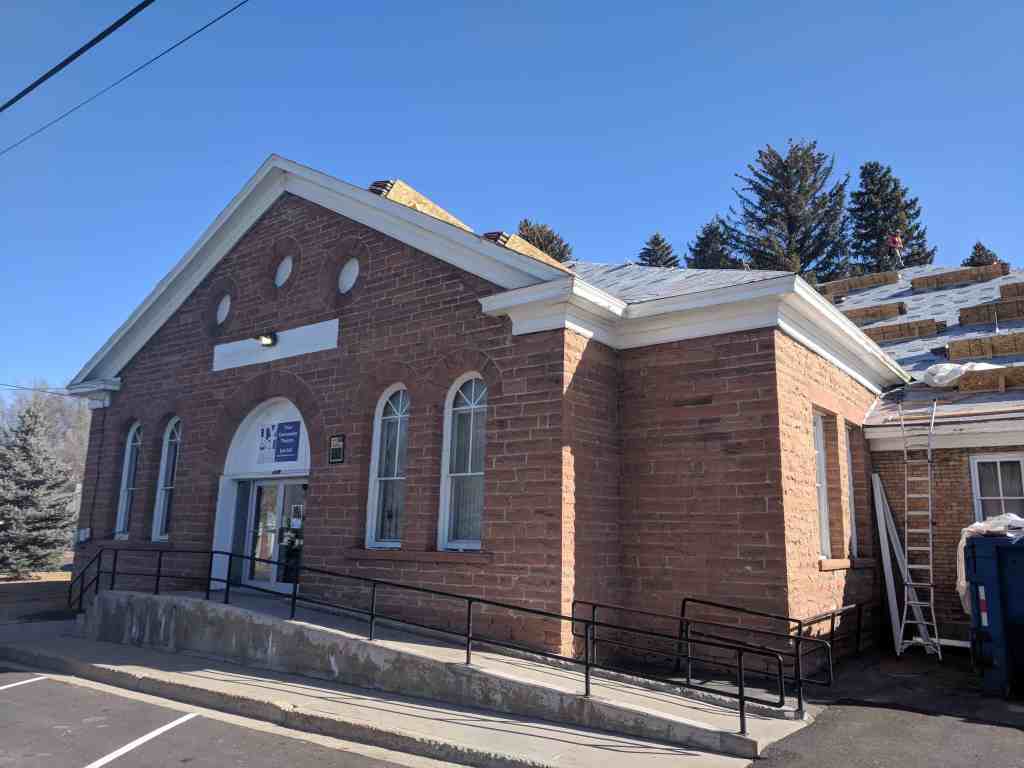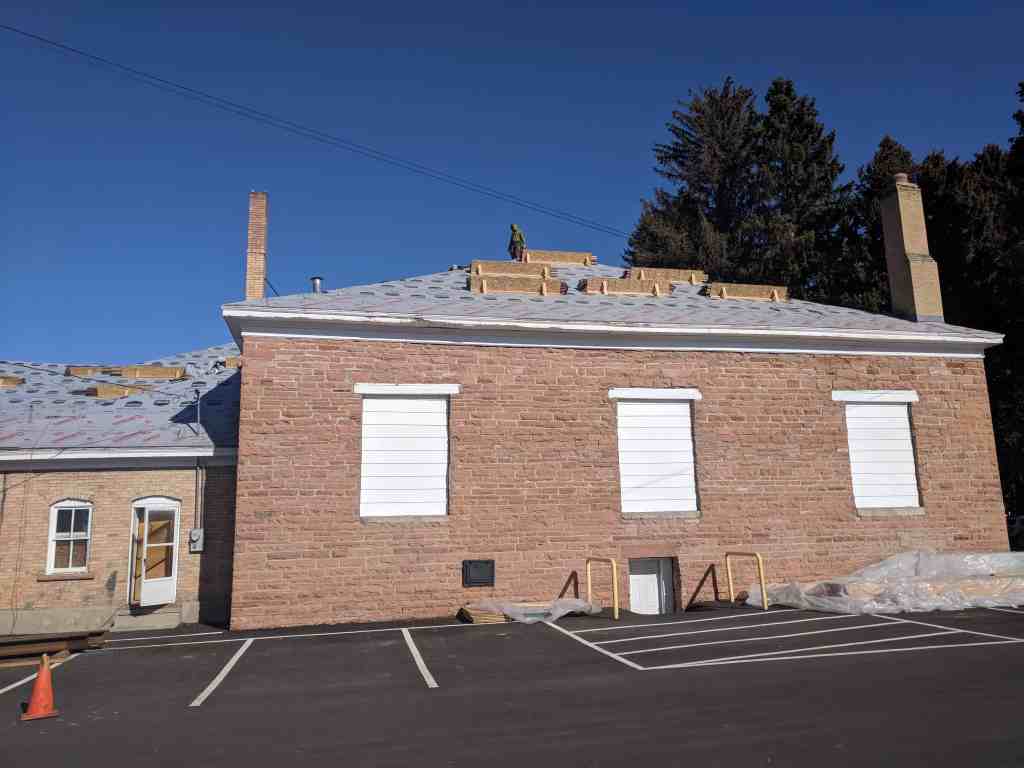
Heber City Amusement Hall
Built in 1906-1908, the Heber City Amusement Hall became a part of the Town Square complex, which included religious, governmental, and recreational facilities. Designed by Mr. Watkins of Provo and built of red sandstone, the structure’s unusual dance floor was considered to be one of the best in the state. The oval-shaped floor is set on 56 heavy coil springs, which are embedded in native sandstone. Dancers often boasted of its excellent “feel”. The hall’s doors and semicircular windows are topped with Roman arches, and pendant arches originally supported the ceiling. The kitchen, added to the southwest corner in 1917, housed cooking and dining facilities. The gables at the north and west ends were probably added in 1928, the same year the pendant arches were replaced and a large annex added to the west side. At this time the front facade was also altered somewhat. Located at the north end of the main hall were the entrance, ticket office, and cloakrooms; at the south end was a stage and bandstand. Once threatened by destruction, the hall was saved through the efforts of concerned citizens.
The Amusement Hall is located at 90 North 100 West next to the tabernacle in Heber City, Utah and was listed (together with the tabernacle as listing #70000633) on the National Historic Register on December 2, 1970.
Related Posts:
Built in 1906-1908 as a joint three-Ward project, the Heber City Amusement Hall became a part of the Town Square complex containing religious, governmental, and recreational facilities. The structure was designed by a Mr. Watkins from Provo, and Edward D. Clyde supervised the volunteers who built it.
The unusual dancing floor is still considered to be one of the best in the State, In 1917 a kitchen was added on the southwest corner and in 1928 a large annex was also built onto the west side to form a “T” structure. At this time the front façade was modified somewhat.
Although it has served for recreational and social functions in the community for years, its destruction was threatened a few years ago. Through the efforts of concerned citizens it has been kept. Although now used as office space (annex) and for storage (ballroom), its restoration is anticipated.












Pingback: Wasatch Stake Tabernacle | JacobBarlow.com
Pingback: Heber City, Utah | JacobBarlow.com